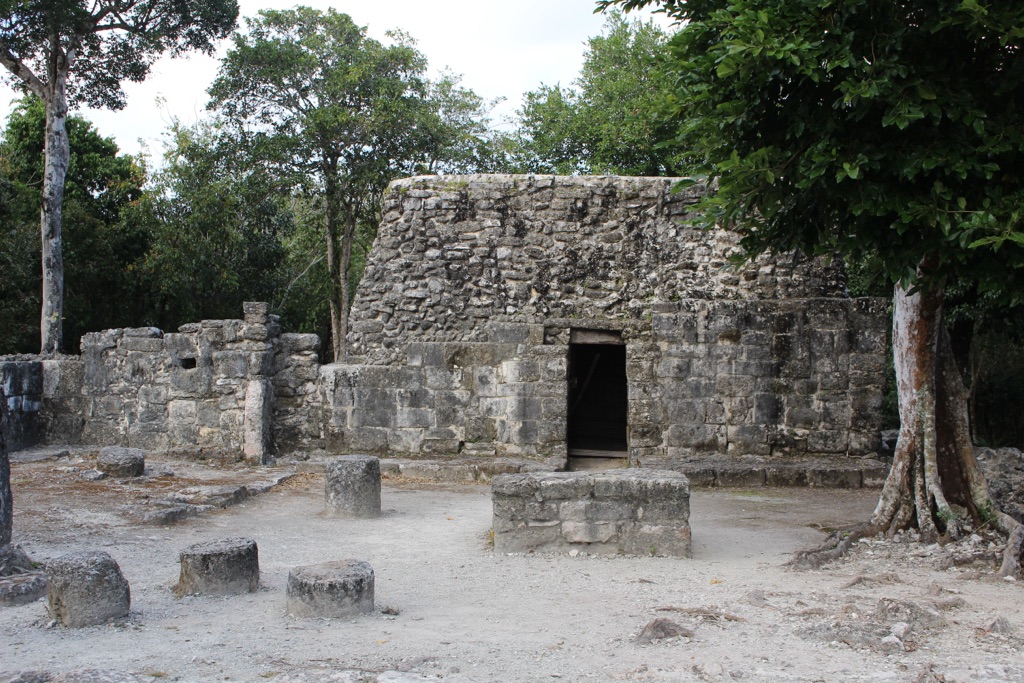The Zona Arqueológica San Gervasio is a pre-Columbian archaeological site located on the island of Cozumel, Mexico. It was a sacred Mayan site dedicated to the goddess Ixchel, the deity of fertility and medicine. The ruins are a testament to the religious significance and the social structure of the Mayan civilization. The site features several temples and platforms, with the central temple being the most significant structure. San Gervasio served as a pilgrimage destination for Mayan women from all over the region. Today, it stands as a valuable historical resource, offering insights into the Mayan culture and its spiritual practices.
Get your dose of History via Email
Historical Background of Zona Arqueológica San Gervasio
Discovered in the early 20th century, Zona Arqueológica San Gervasio is a window into the Mayan past. The site was first documented by the American archaeologist Thomas Gann in the 1920s. The Mayans built it, a civilization known for its advanced knowledge in various fields. San Gervasio became a significant religious center, especially for women who traveled there to worship Ixchel. Over time, the site was abandoned and reclaimed by the jungle until its rediscovery.
Archaeological evidence suggests that the site was in use by the Mayans from as early as the 1st century AD. It continued to be a place of worship until the arrival of the Spanish in the 16th century. The structures that remain today are a mix of several epochs, reflecting the long history of the site. San Gervasio was not only a religious center but also a strategic political and economic hub for the Mayans on Cozumel.
Throughout its history, San Gervasio saw various changes in its architecture and use. The site was expanded and modified by successive Mayan elites, who left their mark on its buildings and altars. It was also the scene of important events, such as religious ceremonies and possibly political gatherings. The site’s significance is underscored by the fact that it remained in use for over a millennium.
San Gervasio’s importance declined with the Spanish conquest, which led to the collapse of the Mayan social structure. The site fell into disrepair and was eventually swallowed by the surrounding vegetation. It was not until the 20th century that San Gervasio was brought back to light, thanks to the efforts of archaeologists and historians. Their work has helped to piece together the story of this remarkable place.
Today, San Gervasio is a protected archaeological zone. It is a destination for tourists and scholars alike, who come to marvel at the achievements of the Mayan civilization. The site continues to be studied, with each excavation providing new insights into the complex history of the Mayans and their spiritual practices.
About Zona Arqueológica San Gervasio
Zona Arqueológica San Gervasio is a complex of ruins that showcases the architectural prowess of the Mayans. The central temple, known as the Temple of Ixchel, is the most prominent structure. It was built with limestone, a common building material for the Mayans, who expertly quarried and shaped it. The temple’s design reflects the Mayan’s deep understanding of astronomy and geometry.
The site includes several other structures, such as altars, smaller temples, and residential buildings. These constructions demonstrate the use of corbel arches, a typical Mayan architectural feature. The buildings were often adorned with stucco and painted with vibrant colors, although much of this decoration has faded over time.
San Gervasio’s layout is indicative of its ceremonial purpose. The site is arranged around plazas and connected by sacbeob, or white roads, which were used for processions and as symbolic pathways. The plazas served as gathering spaces for religious and social events, highlighting the community’s cohesion around their shared beliefs.
The construction methods of the Mayans at San Gervasio were advanced for their time. They employed intricate stone-cutting techniques and developed a form of mortar to hold the structures together. The buildings have withstood the test of time, enduring the tropical climate and natural growth that has enveloped the site.
Archaeologists have also uncovered various artifacts at San Gervasio, including pottery, tools, and religious items. These finds provide a glimpse into the daily life of the Mayans and their spiritual practices. The craftsmanship of these items speaks to the skill and artistry of the Mayan people.
Theories and Interpretations
Several theories surround the use and significance of Zona Arqueológica San Gervasio. The most widely accepted is that it was a pilgrimage site dedicated to Ixchel. Women from across the Mayan world would journey there to seek blessings for fertility and childbirth. This theory is supported by the numerous female figurines found at the site.
Some mysteries remain about San Gervasio, such as the exact nature of the ceremonies conducted there. While it is clear that they were religious in nature, the specifics are lost to history. Archaeologists have had to interpret the site’s structures and artifacts to piece together possible scenarios of its use.
Historical records from the post-conquest period provide some context for the site’s significance. However, much of the Mayan writing was destroyed during the Spanish conquest, leaving gaps in the historical narrative. The interpretations of San Gervasio’s purpose are thus a blend of archaeological evidence and educated conjecture.
Dating of the site has been carried out using methods such as radiocarbon dating and analysis of ceramic styles. These techniques have helped establish a timeline for the construction and use of San Gervasio. They have also revealed the site’s longevity and the changes it underwent over time.
Theories about San Gervasio continue to evolve as new discoveries are made. Each excavation has the potential to alter our understanding of the site and its role in Mayan society. The ongoing research at San Gervasio is a testament to the complexity and depth of Mayan culture.
At a glance
Country: Mexico
Civilization: Maya
Age: 1st century AD to 16th century AD
Conclusion and Sources
Reputable sources used in the creation of this article include:

